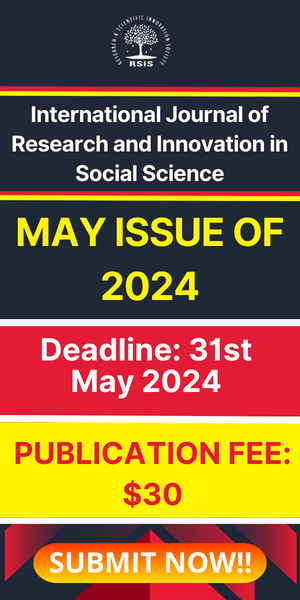- July 15, 2023
- Posted by: rsispostadmin
- Category: IJRIAS
Modelling Daily COVID-19 Cases in Kenya Using ARIMA Model
Caroline M. Kamotho1, Josephine N. Ngure1, Margaret W. Kinyua2
1Department of Pure and Applied Sciences, Kirinyaga University, P.O. Box 143-10300, Kerugoya (Kenya),
2Department of Mathematics Statistics and Actuarial Science, Karatina University, P.O. Box 1957-10101, Karatina (Kenya)
DOI: https://doi.org/10.51584/IJRIAS.2023.8621
Received: 01 June 2023; Revised: 16 June 2023; Accepted: 22 June 2023; Published: 15 July 2023
Abstract: Severe Acute Respiratory Syndrome is the primary cause of the current pandemic coronavirus disease (COVID-19). The first case was reported in Wuhan, China, on December 30th, 2019 with the first case on 13th March, 2020 in Kenya. This contagious disease has become a global issue because it has resulted in millions of deaths, economic disruption leading to loss of employment and economic instability. Researchers have fitted time series models but using a short data length and without a transition. There was therefore a need to model a longer data period of daily COVID-19 cases with a transition in Kenya using the Autoregressive Integrated Moving Average (ARIMA) model and forecast. Secondary data from the World Health Organization from 13th March, 2020 to 30th April, 2023 was analyzed using R software. The data was found to be non-stationary using the Augmented Dickey Fuller test and regular differencing was done to make it stationary. The Box-Jenkins methodology was used to fit the model of the data and afterwards forecasting was done. The ARIMA (3,1,2) was selected as the best model since it had the least Akaike Information Criterion and Bayesian Information Criterion among the possible models. Model validation using test data was done by comparing the MAE, and RMSE of the model’s forecasts and it was the best amongst the possible models with MAE = 2.77 and RMSE =2.88. The model was fitted to the daily COVID-19 data and forecasting was then done for ninety days into the future.
KeyWords: COVID-19, ARIMA, trend, seasonality, forecasts
I. Introduction
The novel coronavirus disease, named COVID-19 by the WHO on February 11th, 2020, is a contagious disease caused by a Severe Acute Respiratory Syndrome Coronavirus 2 known as the SARS-CoV-2 virus. This virus is from the large family of coronavirus (CoVs) which cause Severe Acute Respiratory Syndrome (SARS).
The name SARS-CoV-2 was adopted after the genetically related SARS-CoV by the International Committee on Virus Taxonomy on February 11th, 2020. WHO uses COVID-19 to refer to SARS-CoV-2 to avoid confusion with the SARS disease which sounds almost the same. Polymerase Chain Reaction (PCR) reverse transcriptase is used to confirm the presence of the virus in an individual. Most of the infected people experience minimal to moderate symptoms and fully recover with no treatment. However, some experience severe symptoms and require medical consultation. Older people and those having underlying conditions have a higher chance of developing this illness but any individual can be infected with COVID-19 despite their age. Symptoms appear in five to six days on average, but it can take up to fourteen days for a person to become infected with the virus [12].


